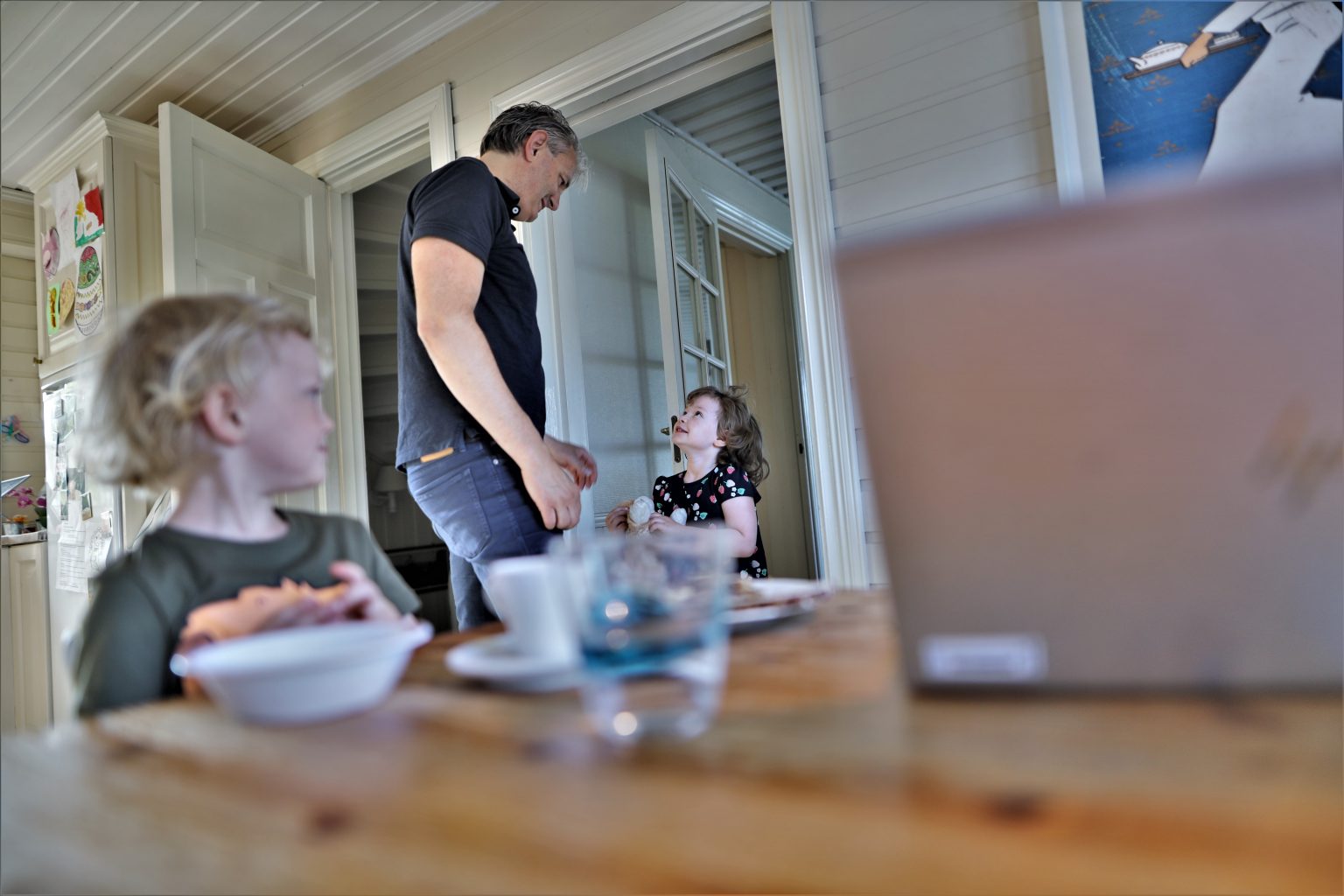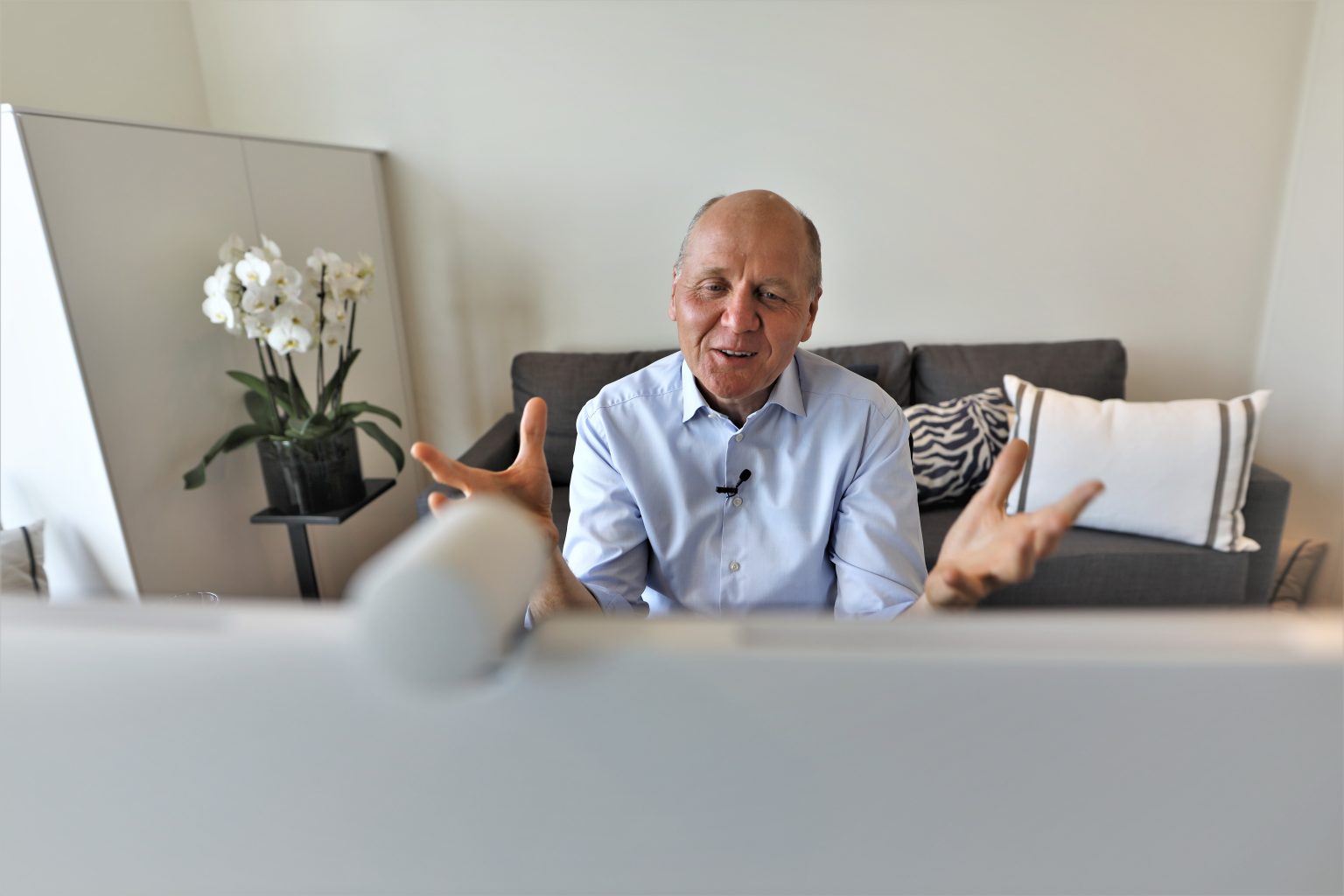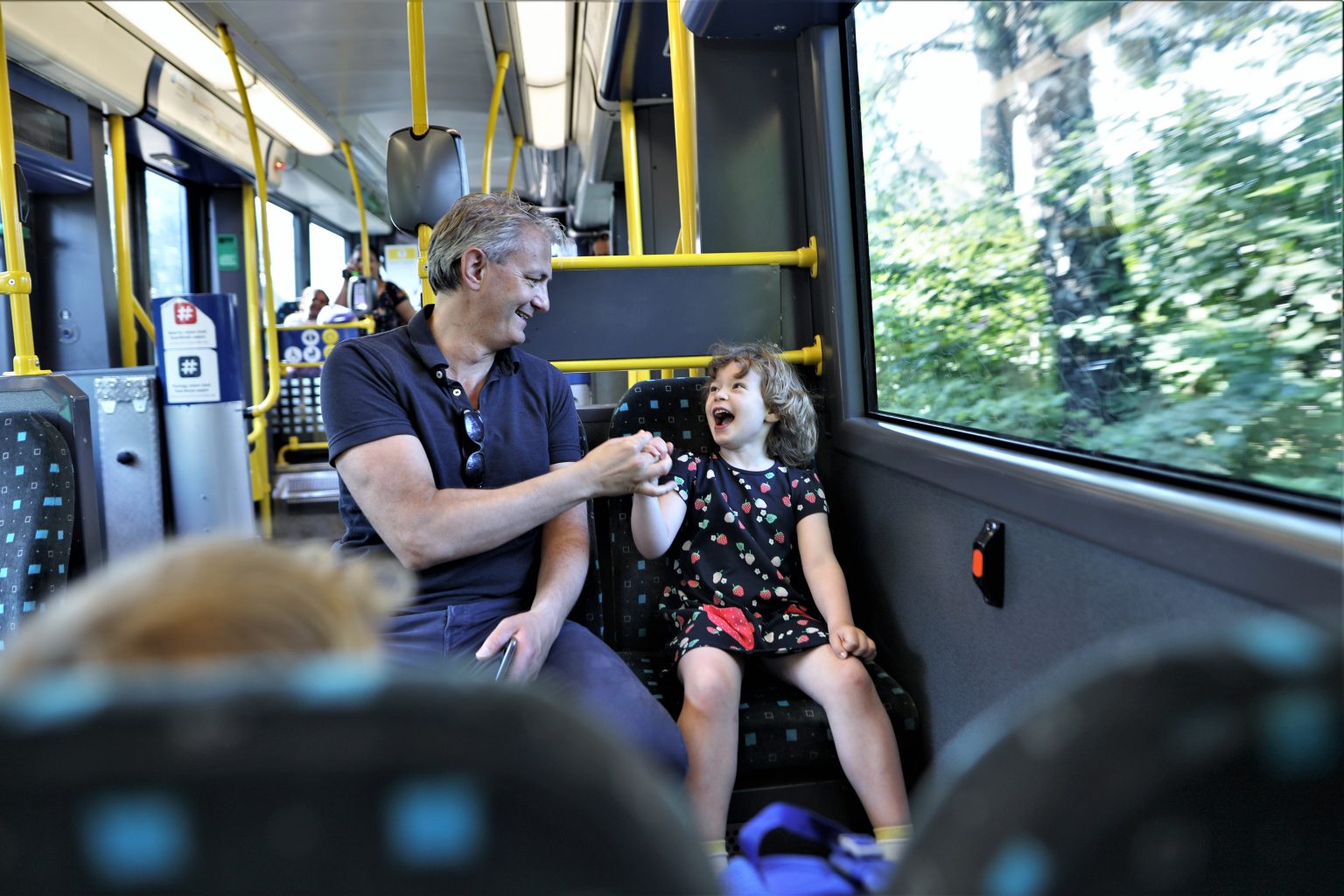“I support leadership that focuses on what the employees deliver, not where they deliver it from”

More flexibility has given Peer Dahl less stress, more efficiency, and a better work-life balance. Now, leaders will have to adapt to ensure it stays that way beyond the crisis.
“Juggling life as a working father of small kids is one of those things most of us need to learn at some point in our lives. Managing it all can be a challenge from time to time, so it’s definitely a benefit to be able to adapt where you work to suit family life,” says Peer Dahl.
He breathes in the smell of a freshly-brewed cup of coffee as a busy new day begins. Today it’s Dad’s turn to take Andrea (5) and Kristoffer (3) to the kindergarten while Mum Margareth takes care of newborn Ida at home. It’s a picture played out in homes across the country, and across the world; a heady mix of hassle, hustle, and breakfast. However, lately, Dahl’s mornings have become less stressful.
“Now, I generally do some work from home in the morning before I wake up the little ones. I’m not going to miss stressing my way down to the office at the crack of dawn in time for an early meeting. It’s far more comfortable and efficient to be able to get some things done from home,” says Dahl, who works as a Communications Advisor at Telenor Norway.

‘Work where you thrive,’ says Telenor spin-off Whereby
More time, less contact
Home offices have become ubiquitous since the COVID-19 pandemic hit. Experiences derived from employees working remotely in the period have been so encouraging for Telenor that the company’s President and CEO, Sigve Brekke, has announced that all employees can to a greater extent choose where to work from.
“We do this to adapt to what we believe is the future working life, where trust, responsibility, management by objectives, and fewer silos will be central. An internal survey we ran showed that employees were happy working from home, and were feeling more motivated and productive. At the same time, we know that people have a need to meet physically, both for collaboration, but also to socialise,” says Brekke.
Dahl is looking forward to spending more of his working days from home, but he recognises that leadership style becomes a premise for how well it will work.
“As long as each of us has clear targets and objectives, I am confident that the increased use of remote working won’t reduce our efficiency. In my experience, there are many elements of my work that can be done more effectively from home. For that reason, I support leadership that focuses on what the employees deliver, not where they deliver it from,” says Dahl.

A day in the life: flexible work in Finland
Leading from distance
Dahl’s perspective is one shared by his colleague and SVP of Employee Experience at Telenor Group, Birgit Bjørnsen. Birgit believes there are two things leaders will need to emphasise: trust and follow-up.
“They are going to be critical success factors for the future of flexible work. When employees are given the freedom to choose from where they work, it’s incumbent on the leader to trust that they are carrying out their work, despite not doing so in the office. Many leaders will have to prepare themselves for a new era, and that leading from a distance isn’t just something that happens in periods of crisis,” says Bjørnsen.
She underlines that leaders at first need to ensure there exists a common understanding of the purpose and the desired achievement of the work tasks.
“Your role is to facilitate the best working conditions possible for your team. Show that you trust them to deliver on the given objectives by not micromanaging. However, you must be close on when it is time to evaluate and work on team development in order to build and maintain a healthy working culture characterised by high performance and trust.”
A simple choice
It’s almost 8:15 AM. The familiar sounds from the rail lines tell us that the tram is on its way.
“I feel really privileged to be able to spend mornings like this with my family,” says Dahl as he and his children settle into a four-seater corner of the carriage on the final leg of their morning journey to kindergarten.
“Honestly, I can get almost all of my work done from home, but I’m not sure if that’s productive or healthy in the long-term. I need to connect with colleagues because that teamwork is where I’m at my best creatively, and when I find the best solutions. At the same time, there’s no doubt that the opportunity to work from home a couple of days a week will make life easier for my wife, the kids, and myself.”
For Dahl, the mad dash from work to pick up the kids before closing time will soon become a distant memory.
“Mornings that are packed with stress aren’t a nice start to the day for anyone. I think flexibility is the smart way to go, and that we will experience a real boost in our quality of life because of it. The kids, too. I, therefore, believe this is positive for all parts, both for me and my family, and my employer.”
